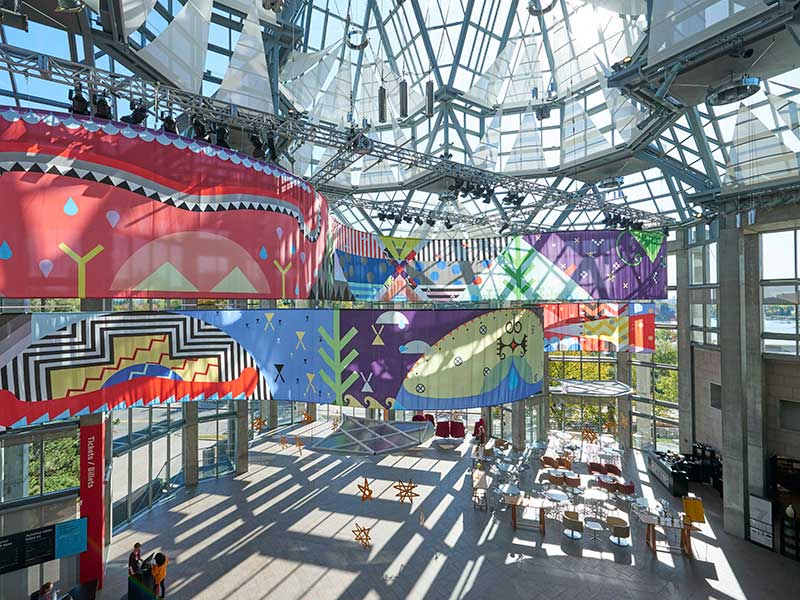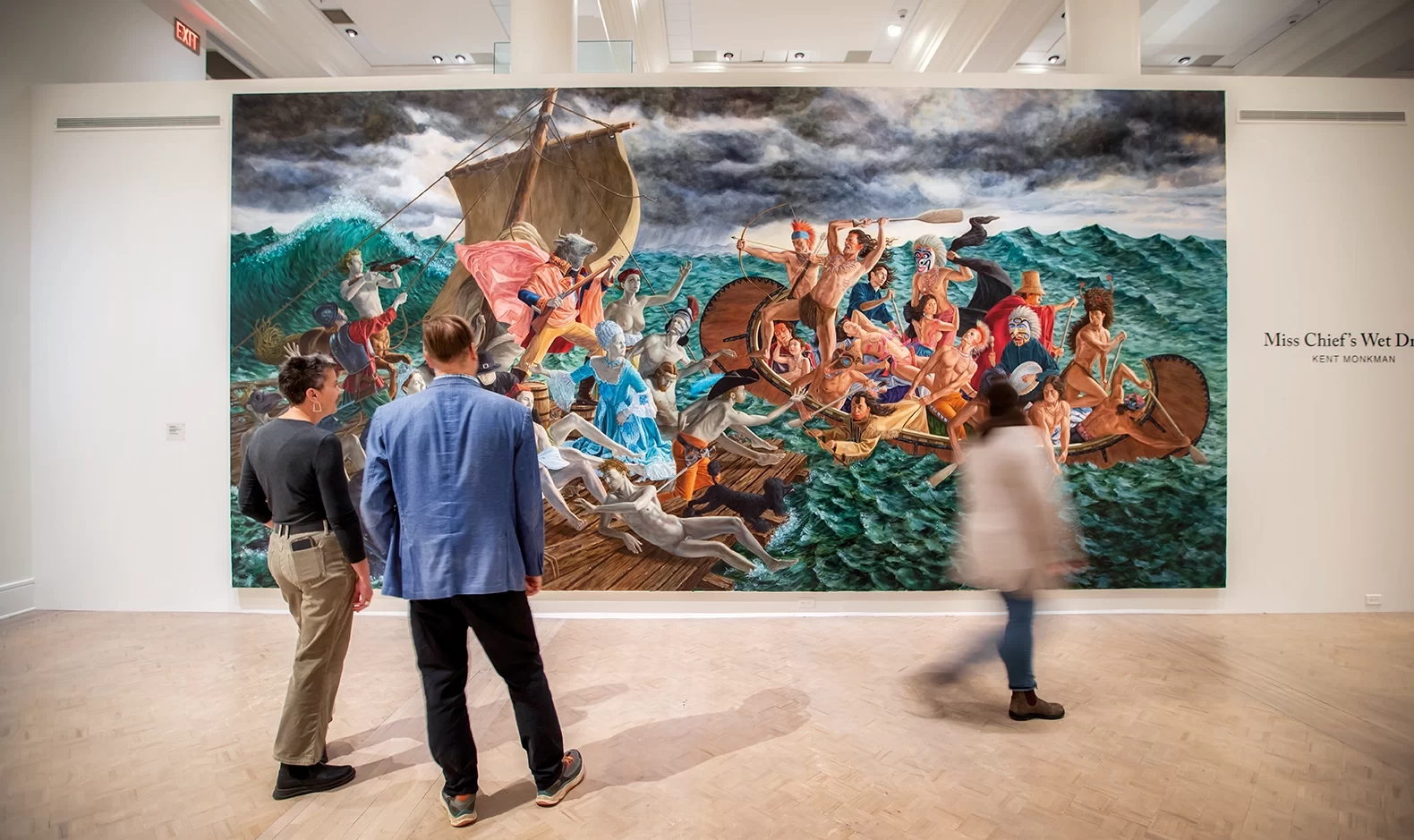Local artists contribute to an extraordinary international exhibition

Tepkik by Jordan Bennett hangs in the National Gallery of Canada.
By Ray Cronin 5 March 2020 Share this story
Visitors to the National Gallery of Canada in Ottawa have the opportunity to see a truly remarkable exhibition, which includes East Coast talents.
Organizers call Àbadakone: Continuous Fire a “global Indigenous contemporary-art exhibition.” It lives up to its billing, with artists represented from every continent.
It follows the gallery’s first global Indigenous exhibition, Sakahān: To Light a Fire (2013). This current exhibition, which features some 70 artists, has expanded on the original by including artists from Africa as part of the conversation around indigeneity.
Àbadakone: Continuous Fire also includes large installations throughout the gallery, perhaps none more striking than “Tepkik (2018–19)” by Mi’kmaw artist Jordan Bennett, who is from Newfoundland but now lives in Halifax.
The National Gallery’s Great Hall, a large open space at the top of the distinctive entrance ramp, is the space underneath the glass tower that forms such an important part of the gallery’s public profile. Bennett has installed a work with stunning effect.
Visitors to the Art Gallery of Nova Scotia or to the Sportsplex in Dartmouth will be familiar with Bennett’s vibrant works, based on traditional Mi’kmaq and Beothuk imagery drawn from petroglyphs, quill work, and the stone amulets of the Beothuk.
“Tepik” means “under the stars,” and this work is a representation of the Milky Way and includes symbols and images that relate to traditional Mi’kmaq stories.
He says he also sees the work as having larger references, a “global means of communication, under the stars.” Bennett, whose work is notable for its expansive vision and generous impulse to share Indigenous perspectives goes on to say that in Tepik we see his perspective, but we can also come to an understanding that “we are all connected.”
Another Halifax-based artist, Ursula Johnson, contributes “Mi’kwite’tmn (Do You Remember),” an installation hat she first exhibited at the Saint Mary’s University Art Gallery in 2014.
Comprised of a series of pedestals topped with Plexiglas cases, her work looks at the way that traditional Indigenous artifacts appear in museum collections.
Johnson, whose great-grandmother is noted basket-maker Caroline Gould, learned to make ash splint baskets from her relatives in her community. For “Mi’kwite’tmn (Do You Remember)” she sand-blasted images of baskets, along with descriptions of the various elements of each style of basket in Mi’kmaw, onto the plexi cases, which were otherwise empty.
The exhibition is too full of stand-out works; my favourites include “What Else?” By Javanese artist Eko Nugroho, who makes satirical figurative sculptures addressing the pressing social issues of his native Indonesia.
Peter Robinson, a Maori artist from New Zealand, made a large installation referencing another museological approach to Indigenous material. His “Defunct Mnemonics” is based on a series of Maori spirit sticks held in the collection of the Museum of New Zealand Te Papa Tongarewa. Robinson’s versions of these work are scattered throughout a gallery, leaning against the walls or lying on the floors, aggressively taking over the space of the gallery.
Another Maori contribution is “AKA,” by the four-artist Mata Aho Collective. “Aka” means vine in their language. This massive sculpture woven from copolymer fibre rope references a narrative about the Maori deity Whaitiri. The collective, made up of four women and founded in 2012, see themselves as “dedicated to highlighting the vital role women play as knowledge keepers in resistance to colonial erasures.”
Resistance is a recurring theme in this exhibition, whether in the photography of Will Wilson, such as “K’ómoks Imperial Stormtrooper (Andy Everson), Citizen of the K’ómoks First Nation,” the large mixed media drawing of Joseph Tsiga (who spent some time in Halifax at NSCAD University), or the performances and sculptures of Maria Hupfield (which some readers may have seen last year at the MSVU Art Gallery).
Timely, engaging, moving and important. One easily runs out of words to describe this fantastic exhibition. Originally slated to end on April 5, “Àbadakone: Continuous Fire” has been extended by the National Gallery until August 23.
This story was originally published in Halifax Magazine.
















